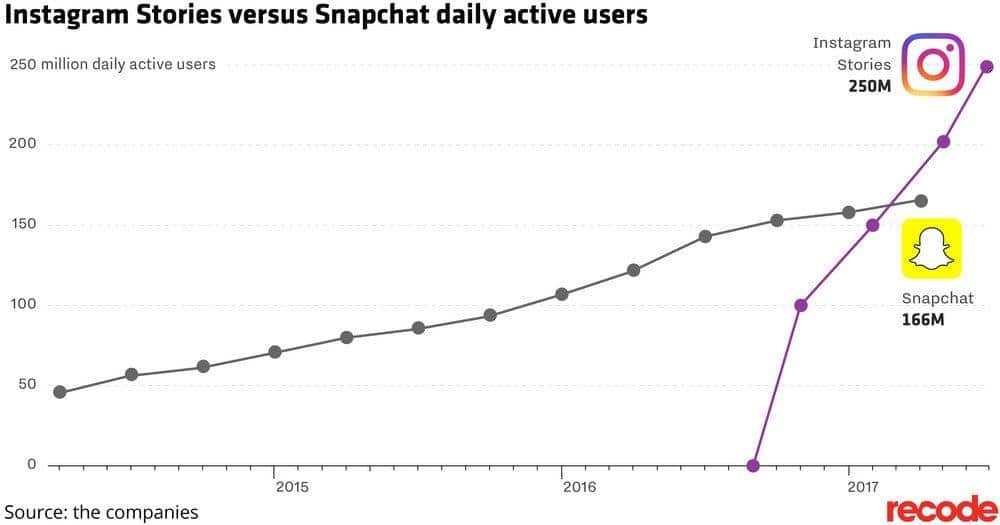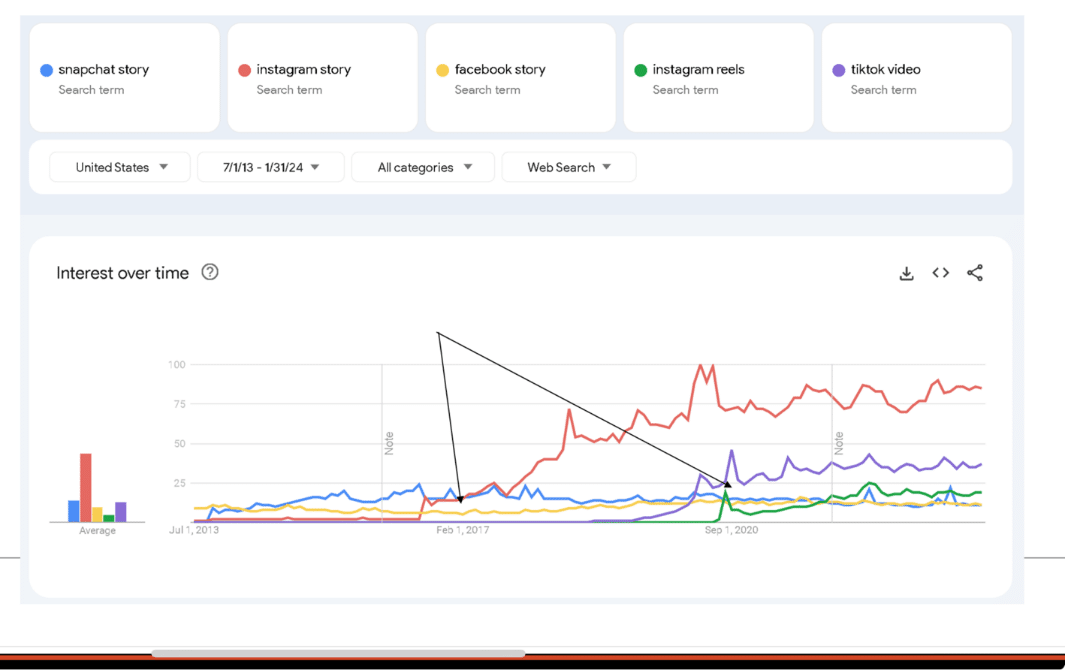Vertical video has become the mainstream format for advertisers, proving its value across various industries and categories.
Historically, video ads were tailored for the traditional 16:9 landscape format, primarily on television. However, the emergence of mobile-first social media and evolving user behaviors and engagement patterns have ushered in a new era of vertical video advertising.
This shift transforms storytelling from the long-form 60 and 120-second segments that captivated a seated, undistracted audience to a dynamic, distraction-filled present where engagement within the first three seconds is critical, requiring content that feels organic.
This article explores the rise of vertical videos and how to leverage them when advertising across platforms such as Instagram, Facebook, TikTok and YouTube Shorts.
The rise of vertical video: From Snapchat to Instagram, TikTok to Shorts
Snapchat popularized the vertical video format when it launched its ad platform in 2014. Combined with the power of social media, fast internet and engaging full-screen ads, this innovation made a big impact.
Vertical video’s early success and wide adoption had a massive influence on other platforms due to its effectiveness. The 100% Share of Voice (SOV) was crucial, as it minimized distractions compared to traditional TV, news feeds, display ads and YouTube placements. The novelty of any new ad placement is incomparable, which is why many social platforms and marketers move quickly to embrace innovation.
Following Snapchat’s footsteps, Meta’s Instagram Stories expanded vertically, introducing its ad placements in early 2017 after some initial tests in August 2016.

The explosion of Instagram Stories will be in the digital advertising history books as one of the greatest moves by Meta to improve shareholder value by increasing engagement through time spent while enhancing their newly purchased Instagram.
Adopting the 24-hour content strategy induced fear of missing out (FOMO), leading to a surge in impressions that soared annually, peaking during the pandemic when costs for these sought-after slots plummeted, generating significant profits for companies, particularly in ecommerce, as observed in my experience.
In 2017, vertical video gained traction with the launch of Facebook Stories. However, TikTok stole the spotlight upon its September debut, offering a vertical-only feed and prioritizing trending content through its algorithm, which reshaped creator and user engagement dynamics.

From 2018 to 2020, we witnessed TikTok’s inconspicuous yet explosive growth and its vertical video platform’s dominance. TikTok’s watermark on shared videos was a stroke of genius.
Meta, which had always regarded its content creators as the core of its product and advertising base, did not anticipate TikTok’s accelerated growth via branded content shared on their platforms. Meta belatedly penalized watermarked videos in their algorithms, curbing TikTok’s branding reach on Instagram and Facebook.
Today, vertical video advertising will ascend to the pinnacle of the creative hierarchy, compelling brands, agencies and media buyers to adopt a “vertical-first” strategy across platforms like Reels, TikTok and YouTube Shorts.
Shorts is the most recent launch of a vertical full-screen video advertising placement, a unique opportunity for the YouTube platform to increase time spent on the platform, videos watched per visit and overall impression volume.
YouTube continues to expand and remain a unique offering for advertisers with skippable shorts and long-form placements, along with the addition of in-feed.
One interesting insight is the RPM (Revenue Per Thousand Impressions) between placements highlighted by TubeBuddy.
“The average RPM for a long form video is around $3, meaning a 100,000 views could earn you around 300 bucks on average. Of course, some creators make a lot more, some make a lot less. But for Shorts, the average RPM is around 5 cents. So, the same amount of views might just bring you in $5.”
– “Real Numbers: How Much Does YouTube Shorts Pay for 1 Million Views?” (TubeBuddy)
Showcasing a wide difference between shorts and long-form raises questions for marketers:
If YouTube’s payouts for Shorts are minimal, does it suggest lower engagement or conversion rates compared to longer videos? Or are we witnessing the early stages of a format ripe for those willing to master vertical video at a bargain?
Prioritizing vertical video advertising with AI and content variation
I believe the most effective strategy for advertisers is to prioritize video, particularly vertical video, in their campaigns to leverage the broadest inventory and platform placement range. I would recommend combining vertical video with AI and content variation.
AI tools
Today, numerous AI video software can condense long-form videos into bite-sized segments. I covered this in detail in my SMX Next presentation, “Level up your YouTube advertising by combining AI and YouTube data” (registration required). This can help you understand video AI but also how to transition long form to short form vertical at scale.
Additionally, software like CapCut is gaining traction with AI features that effortlessly convert standard 16:9 videos into a “TikTok-ready” vertical format through precise cropping and motion tracking.
Content variation
One of the hidden benefits or features of vertical video is the mindset of the user viewing the ad. Vertical ads typically feature UGC-style, fast-motion videos with quick cuts to engage users and convey action swiftly.
Some variations that can be tested and evaluated in this vertical format while feeling native to the platform experience include:
- Greenscreen.
- Top Regrets (reverse psychology).
- Talking head.
- Stitch incoming.
- Product demonstration.
- What I ordered vs. what I got.
- The comment overlay response.
Embracing vertical video ads across platforms
In my early presentations, I was keen to discuss the value of long-form skippable ads as the most valuable impression on the web. But my perspective has evolved five years later.
Vertical video is now an absolute must for marketing and advertising strategies. It’s crucial for fostering a harmonious relationship between organic and paid content, often leading to better performance.
Paid media fuels a fire for a brand’s product or service, creative approach, messaging and overall content strategy.
It’s time to explore a vertical-centric approach, test across multiple platforms and introduce variety to your video content. These burgeoning vertical placements can help you deeply understand your audience and achieve the most cost-effective results.
from Search Engine Land https://ift.tt/Ni0as1B
via IFTTT
No comments:
Post a Comment